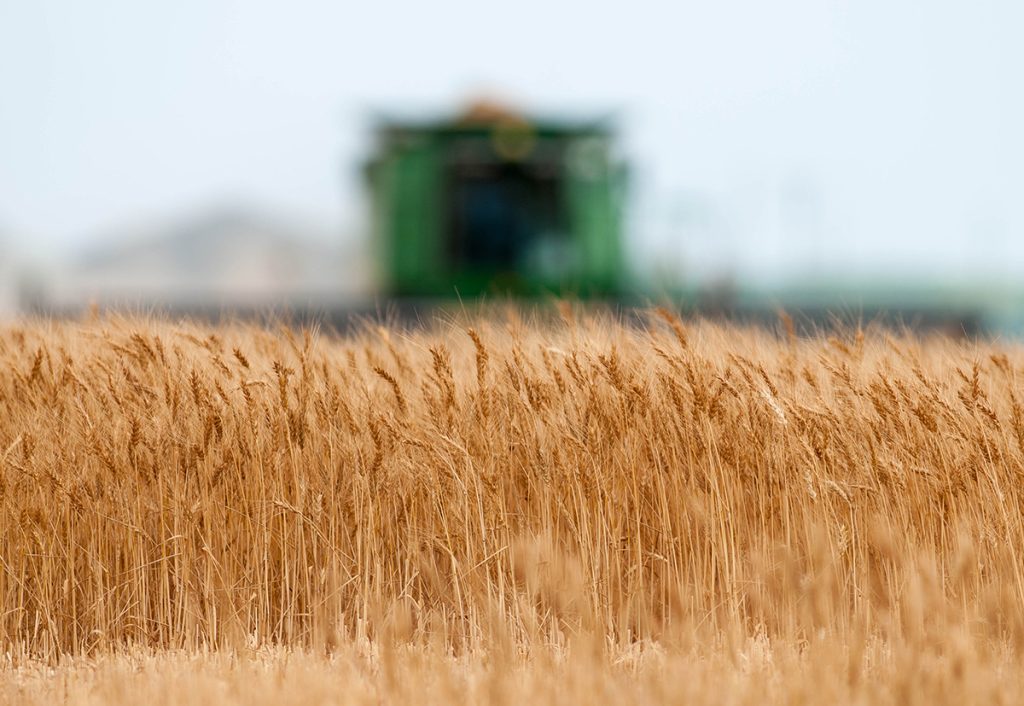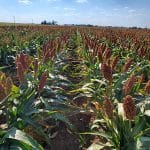K-State lab remains vigilant toward protecting food systems

KState1-RFP-051225
University is part of national plant biosecurity effort
MANHATTAN, Kan. — Americans trust the safety and security of their food.
Kansas State University plant pathologist Jim Stack says our trust is well-founded, pointing to a series of checks and balances that help to ensure that the food we eat arrives safely and on time at the dinner table.
Consider this: Farm crops — be they wheat, corn, soybeans, sorghum or many others — face daily challenges in the farmer’s field due to such threats as insects, diseases, weeds and weather events.
If the crop passes the test, it’s on to harvest with heavy machinery, then storage in bins and distribution through any of several channels — truck, ship, train and even airplane. Then there is processing and packaging the food, retail storage and marketing, and then it’s off to a kitchen where Americans have the ultimate responsibility to chill, clean and cook the product safely.
“Most of the foods in Kansas grocery stores were not grown in Kansas; they were produced elsewhere and transported into Kansas,” Stack said. “That is true for most U.S. states and many countries globally. Our foods are grown in multiple locations and transported to multiple locations. This creates the significant risk of transporting pests and pathogens with their foods and their containers.”
Because there are threats throughout the system, American agriculture must remain vigilant at every stage of food production. Fortunately for American consumers, researchers at K-State and other universities are addressing many of these threats.

PLANT EXPERTS
Stack is the director of the Great Plains Diagnostic Network, one of five regional centers under the National Plant Diagnostic Network, established in 2002 by the National Institute of Food and Agriculture and the U.S. Office of Homeland Security. The network was formed to enhance agricultural biosecurity by detecting potential disease outbreaks or bioterrorist threats.
Kansas State University software engineers developed a lab management information system, called Plant Diagnostic Information Systems, that is used by many states throughout the nation. Today, the network has plant diagnosticians — including pathologists, entomologists, weed scientists and other plant specialists — who share information across the country to keep America’s food and fiber system as safe as possible.
“If countries want to participate in global trade, there is a set of rules that they must abide by,” Stack said. “Those rules are the basis of phytosanitary policy. The World Trade Organization designated the United Nations Food and Agricultural Organization to be responsible for these rules, under the International Plant Protection Convention.”
The International Plant Protection Convention is a 1951 treaty between participating nations — the U.S. included — that aims to secure actions that prevent and control the introduction and spread of plant pests.
“Trading partners are required to put clean material into the global marketplace,” Stack said. Some ways to determine if you’re doing that include incorporating best production practices, field surveillance and diagnostic testing.”
Annually, the Great Plains Diagnostic Network, which has its headquarters on K-State’s Manhattan campus, processes 1,500 samples of suspected diseases, unidentified insects, or unusual symptoms on plants and farm crops.
“Diagnostics is the process of identifying not only what the organism is, but also understanding why the disease or infestation is happening,” Stack said. “We use a lot of technology to do that. One of the positive results of having phytosanitary policies is that we’ve been cleaning up the plant material that is traded around the planet.”
NO MARGIN FOR ERROR
Detecting plant pests and pathogens requires precision and accuracy, Stack said.
“Most international and federal response plans are linked to the name of the organism. If you don’t get the name right, you don’t have a legal right to respond to a suspected outbreak,” he said.
An incorrect diagnosis, in other words, might lead to the introduction, establishment and spread of a pest or pathogen.
“In 2010 in Australia, they discovered a new rust disease in a nursery in New South Wales that they called myrtle rust,” Stack said. “They quarantined the nursery to contain and eventually eradicate the pathogen.
“But a secondary analysis indicated that it was not myrtle rust but rather guava rust; however, the response plan was for myrtle rust. While the discrepancy in the name was being resolved, the nursery was not precluded from trading its plants. While waiting to get a correct identification, the pathogen spread from New South Wales to Queensland and other places.”
The disease turned out to be myrtle rust after all — putting an estimated 70% of Australian flora at risk.
“That’s just one example,” Stack said. “There are multiple examples like that in countries around the world. We spend a lot of time and effort to get it right the first time.”
WHEAT DISEASE
Kansas State University scientists have had their eye on a particularly troubling disease that is capable of taking out entire wheat fields. Recently retired plant pathologist Barbara Valent initiated research projects at K-State that are considered the world’s most comprehensive studies on wheat blast.
Valent’s research team was the first to discover a source of resistance, called 2NS, for wheat blast disease. Her group also pioneered sophisticated microscopic techniques that allow them to watch and record how the disease develops cell-by-cell and hour-by-hour in amazing detail.
Prior to her retirement in late 2024, Valent had worked on understanding blast disease for more than 40 years; in 2022, she was recognized with membership into the National Academy of Sciences — the first scientist at K-State to earn the honor for original research conducted at the university.
Stack and fellow K-State faculty members Giovana Cruppe and Sanzhen Lui are continuing that work in K-State’s Biosecurity Research Institute, a biosafety level-3 agriculture facility on K-State’s Manhattan campus
“We are looking at the likelihood of detecting this pathogen by the methods that are commonly used in seed inspection,” Stack said. “And — I’ll just cut to the conclusion — it’s very, very unlikely to detect the pathogen that way. Unless it’s a full-blown epidemic, you’re probably not going to detect it.”
The team of plant biosecurity scientists began developing different protocols to see if they could more accurately detect the presence of the wheat blast pathogen in a shipment of seed.
“We ended up with the conclusion that you could have up to 100 kilograms of infected seed in a 20-metric-ton harvest wagon, and you would not detect infected grain with traditional methods,” he said.
In other words, if even half of 1% of a shipment of seed goes undetected for wheat blast disease, that shipment could cause widespread devastation anywhere those seeds are planted.
“That seed is being shipped across the world, potentially into the United States,” Stack said. “Because of that, if we’re not vigilant, we’re likely to experience more outbreaks.”
Additional work in Stack’s lab includes studies with bacterium and the emergence of new diseases that could potentially affect agricultural crops as well as plant toxins that could be lethal to livestock if ingested.

VAST NETWORK
Stack said that the National Plant Diagnostic Network has provided diagnostic services to about 97% of the more than 3,000 counties in the United States since its inception 20 years ago, including the territories in the Caribbean and Pacific.
“We span seven time zones and have about 75 active labs, plus partners in satellite labs. And the labs at the Department of Agriculture in some states are part of the network,” he said. “We also have a few industry labs that see value in this system.”
Stack said that the combined power of the network is critical because the consequences of a late detection or an inaccurate identification are quite serious, not just domestically but also internationally.
“The result of disease introductions into our food systems is potentially the reduction of production, or at least lost potential,” Stack said. “You take a crop like wheat in Kansas … half of that is for export. Or think of corn and the diseases we are dealing with. About 80% of Kansas’ corn production is in southeast Kansas to support the livestock industry. If we can’t produce enough corn or produce it profitably, it will hurt both crop and livestock producers.
“Plant diseases cause ripple effects that we need to take into account. We need to be all over this.”









